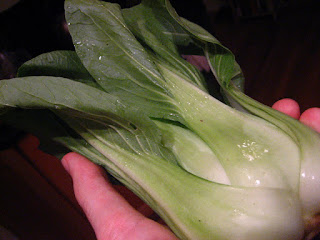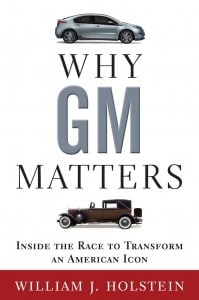 This is the second installment of my "Better Know a Chinese Province" series. Up next: Hubei Province. I'm going to call China's Hubei (湖北, meaning "North of the Lake") a smaller, rainy version of Nevada. The capital of Hubei, Wuhan, is famous for its hot summers, with temperatures averaging 99°F in July. The city is known as one of the "Three Furnaces of China." Las Vegas is hotter still, but in addition to the heat, Wuhan gets more rainfall than Boston. Ouch. I've lived in Las Vegas and in Boston, so I can appreciate how awful it would be to combine the worst aspects of their climates into one place. The Hubei-Nevada comparison is also good because The Three Gorges Dam is located in Hubei, and the Hoover Dam sits on the Arizona-Nevada border. If you don't troll Google News like I do, the Three Gorges Dam is the largest electricity generating plant of any kind in the world, producing 20 times more power than the Hoover Dam and far more power than the world's largest nuclear power plant (which is the Kashiwazaki-Kariwa Power Plant in Japan).
This is the second installment of my "Better Know a Chinese Province" series. Up next: Hubei Province. I'm going to call China's Hubei (湖北, meaning "North of the Lake") a smaller, rainy version of Nevada. The capital of Hubei, Wuhan, is famous for its hot summers, with temperatures averaging 99°F in July. The city is known as one of the "Three Furnaces of China." Las Vegas is hotter still, but in addition to the heat, Wuhan gets more rainfall than Boston. Ouch. I've lived in Las Vegas and in Boston, so I can appreciate how awful it would be to combine the worst aspects of their climates into one place. The Hubei-Nevada comparison is also good because The Three Gorges Dam is located in Hubei, and the Hoover Dam sits on the Arizona-Nevada border. If you don't troll Google News like I do, the Three Gorges Dam is the largest electricity generating plant of any kind in the world, producing 20 times more power than the Hoover Dam and far more power than the world's largest nuclear power plant (which is the Kashiwazaki-Kariwa Power Plant in Japan).
The Jianghan Plain makes central and eastern Hubei very flat, but the rest of the province is mountainous like Nevada (Bonus: Hubei  contains the Wudang Mountains, for which the Wu-Tang Clan is named). Hubei is sub-tropical and very lush. It grows a lot of cotton, rice, wheat, tea, and is known in China as the "Land of Fish and Rice" (鱼米之乡). There is mining activity southwest of Wuhan, which is appropriate given Nevada's history of silver mining. It also has some manufacturing, including automobiles, machinery, power generation equipment, and textiles. Hubei's economy isn't much larger than Nevada's (as measured by GDP) and with 60 million people versus Nevada's 2.6 million, that's pretty incredible. Hubei also has access to the Yangtze River, Asia's largest, which connects Wuhan to Chongqing, Nanjing, and Shanghai.
contains the Wudang Mountains, for which the Wu-Tang Clan is named). Hubei is sub-tropical and very lush. It grows a lot of cotton, rice, wheat, tea, and is known in China as the "Land of Fish and Rice" (鱼米之乡). There is mining activity southwest of Wuhan, which is appropriate given Nevada's history of silver mining. It also has some manufacturing, including automobiles, machinery, power generation equipment, and textiles. Hubei's economy isn't much larger than Nevada's (as measured by GDP) and with 60 million people versus Nevada's 2.6 million, that's pretty incredible. Hubei also has access to the Yangtze River, Asia's largest, which connects Wuhan to Chongqing, Nanjing, and Shanghai.
The Three Gorges Dam was largely completed in 2008. 1.24 million people have been displaced by the dam's construction and as the rising water levels cause landslides, more are likely to be forced out. I'm including the trailer for Up the Yangtze below, which I haven't seen yet, but want to. Nothing funny about this one:
While its actual origin in disputed, the first recorded outbreak of the Black Death, the 14th century bubonic plague that killed between 30% and 60% of all Europeans, occurred in Hubei in 1334. Coincidentally, about the same proportion of frat guys lose all of their money and get Chlamydia in Las Vegas.
 Lastly, in 1912, Sun Yat-Sen proclaimed the creation of the Republic of China from Hubei province, ending 2,000 years of imperial rule in China. While Sun believed in democracy, his Kuomintang Party was quickly usurped by Yuan Shikai (who proclaimed himself emperor of China in 1915), and later by Generalissimo Chiang Kai-shek (pictured here). Chiang would eventually get his ass kicked by Mao Zedong's Communists in the Chinese Civil War and be forced to retreat all the way to Taiwan. From here, he set up a rival government to Beijing, and China and Taiwan have technically been at war ever since.
Lastly, in 1912, Sun Yat-Sen proclaimed the creation of the Republic of China from Hubei province, ending 2,000 years of imperial rule in China. While Sun believed in democracy, his Kuomintang Party was quickly usurped by Yuan Shikai (who proclaimed himself emperor of China in 1915), and later by Generalissimo Chiang Kai-shek (pictured here). Chiang would eventually get his ass kicked by Mao Zedong's Communists in the Chinese Civil War and be forced to retreat all the way to Taiwan. From here, he set up a rival government to Beijing, and China and Taiwan have technically been at war ever since.














































